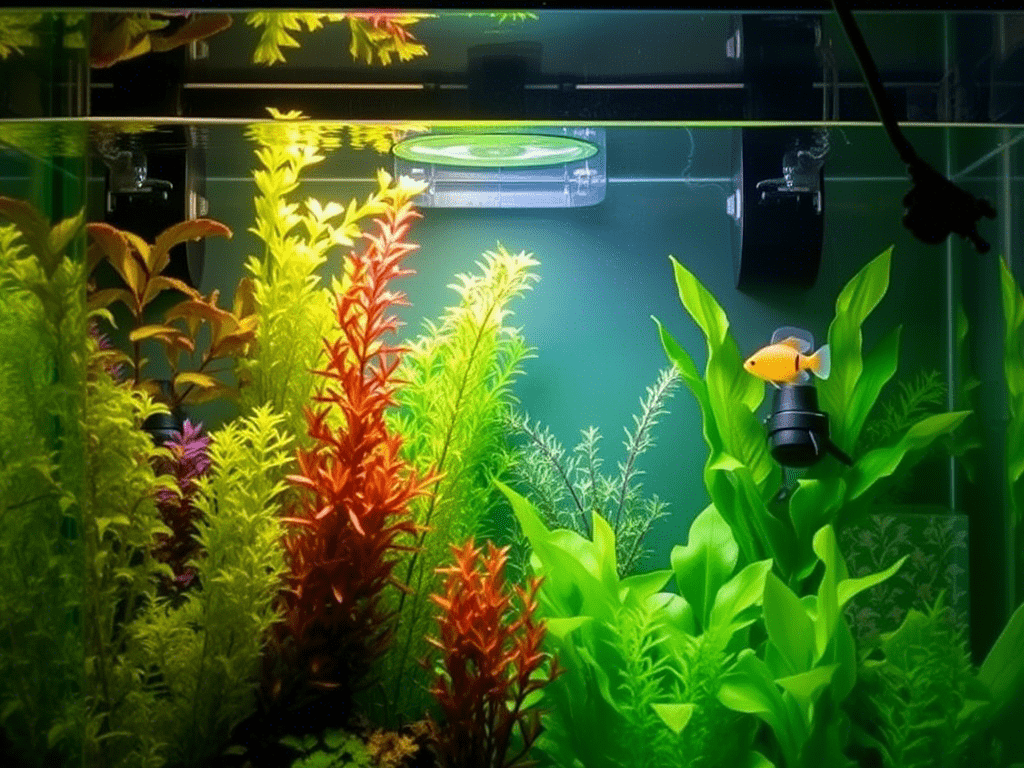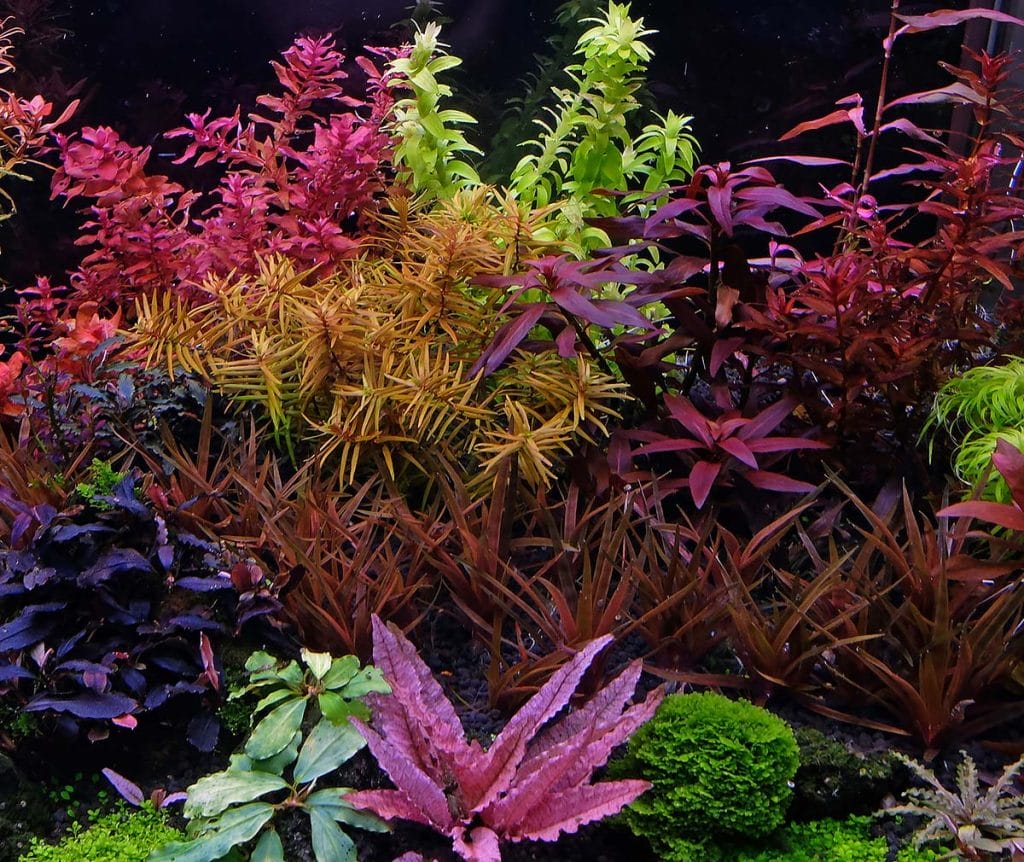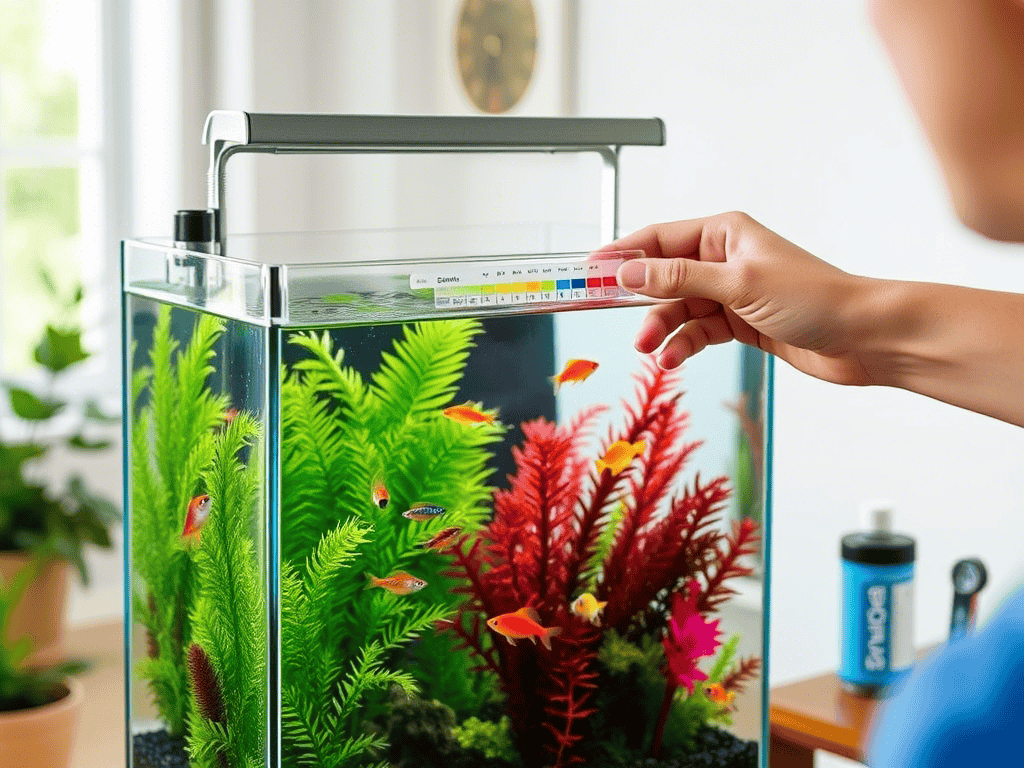Introduction

Aquarium plants are more than just decorative elements—they play a vital role in maintaining a balanced ecosystem within your tank. Aquarium plants enhance the aesthetic appeal and ecological balance of aquariums, offering benefits like oxygen production, nitrate reduction, and fish habitat creation. However, maintaining their health can be challenging, with common issues like yellowing leaves, stunted growth, and algae overgrowth affecting many hobbyists. This guide aims to address these challenges by providing a structured approach to plant care, ensuring a thriving underwater garden.
Why Aquarium Plant Health Matters More Than You Think
Healthy aquarium plants are not merely decorative—they play a vital role in maintaining water quality and supporting fish well-being. Did you know that live plants can reduce nitrate levels by up to 50%? This natural filtration system minimizes harmful toxins, creating a safer environment for your aquatic pets. However, neglecting plant health can lead to frustration, costly mistakes, and even jeopardize your entire tank’s ecosystem. Let’s explore how to avoid these pitfalls and ensure your plants thrive.
Key points
– Aquarium plant health depends on proper lighting, nutrients, water quality, and maintenance.
– Use LED lights for 8-10 hours daily, ensure balanced nutrients like nitrogen and iron, and maintain pH between 6.5-7.5.
– Common issues include yellowing leaves (nutrient deficiency) and algae (excess light/nutrients); address with testing and adjustments.
– Surprisingly, many beginners overfeed fish, leading to high nitrates and algae, which can be prevented with regular water changes.
Detailed Requirements for Healthy Aquarium Plants
To keep aquarium plants healthy, several factors must be optimized:
Lighting: The Foundation of Photosynthesis

Lighting is essential for photosynthesis, where plants convert light energy into chemical energy. The search results highlight that LED lights are preferred over fluorescent ones due to their efficiency and longevity, lasting over 5 years Aquarium Lighting Guide. Intensity, measured as PAR (Photosynthetically Active Radiation), varies by plant type: low-light plants like anubias and crypts need less intensity, while high-light plants like carpeting species require more, often necessitating CO2 injection to prevent algae How to Pick the Best Light for Freshwater Planted Aquariums. Duration should be 8-10 hours daily to simulate natural cycles, avoiding overexposure that can scorch plants and promote algae.
Nutrient Management: Feeding for Growth

Plants require a balanced diet of macronutrients and micronutrients. Macronutrients, needed in large quantities, include nitrogen (N), phosphorus (P), potassium (K), calcium (Ca), magnesium (Mg), and sulfur (S), while micronutrients like iron (Fe), manganese (Mn), copper (Cu), and zinc (Zn) are needed in smaller amounts What nutrients do aquatic plants need for growth ?. Fish waste provides some nutrients, but supplementation is often necessary, especially in low-stocked tanks or for demanding plants. Fertilizers can be liquid, root tabs, or embedded in substrates, with testing recommended to prevent deficiencies like yellowing leaves from iron lack ([Guide to Planted Aquarium Nutrients.
Water Quality: The Backbone of Plant Health

Water parameters significantly impact plant health. The ideal pH range is 6.5-7.5, with hardness (GH and KH) also critical for nutrient uptake Aquarium Water Parameters. Stable conditions prevent stress, with regular water changes (50% weekly) removing nitrates and maintaining mineral levels. Sudden changes can cause melting leaves, especially during plant transitions from emersed to submersed growth Using Tap Water For a Planted Aquarium. Some Common Fish Health Issues
Selecting and Planting Aquarium Plants
Choosing the right plants involves matching them to your aquarium’s lighting and water parameters. Plants like stem plants (e.g., Rotala) need medium to high light, while floating plants like water sprite thrive in various conditions. Planting techniques include burying roots adequately and providing support for stem plants, ensuring compatibility with fish to avoid chemical interactions that could harm aquatic life Aquarium Plant Care.
Maintenance Strategies for Long-term Health
Regular maintenance is key to preventing issues. Pruning controls growth and shapes the aquascape, while cleaning removes dead leaves and algae to maintain water quality. Monitoring involves weekly water tests for pH, hardness, and nutrient levels, with adjustments made gradually to avoid plant stress. For example, increasing calcium levels can be done by adding crushed coral to the substrate Nutrient Deficiencies: Why Your Aquarium Plants Are Dying.
Frequently Asked Questions About Aquarium Plant Health
1. Why Are My Aquarium Plants Dying
Dying plants often result from poor lighting, nutrient deficiencies, or incorrect water parameters. For instance, insufficient light hinders photosynthesis, while low iron levels cause chlorosis (yellowing). Test your water regularly and adjust conditions accordingly. Remember, consistency is key to preventing stress on your plants
2. How Can I Prevent Algae Overgrowth?
Algae thrive in nutrient-rich environments with excessive light. Combat this by maintaining a consistent lighting schedule (8-10 hours daily), performing weekly water changes, and introducing algae-eating species like Nerite Snails or Amano Shrimp. These small adjustments can make a world of difference.
3. What Are the Best Beginner-Friendly Plants?
Beginner-friendly plants include Java Fern, Anubias, and Amazon Sword. These species are hardy, adapt well to various water conditions, and require minimal maintenance, making them perfect for novice aquarists. Start with these to build confidence before experimenting with more delicate species.
4. How Often Should I Fertilize My Plants?
Fertilization frequency depends on your tank setup. Liquid fertilizers are typically added weekly, while root tabs should be replenished every 3-6 months. Always test water parameters before adding nutrients to avoid over-fertilization, which can lead to algae blooms.
5. Can I Use Tap Water for My Aquarium?
Tap water varies by region. While some areas have safe tap water, others contain chlorine, chloramine, or heavy metals that harm plants. Use a water conditioner to neutralize harmful chemicals and consider reverse osmosis (RO) water for sensitive species. This step ensures your plants receive clean, nourishing water.
Common Plant Problems and Solutions
Several issues can arise, each with specific solutions
| Problem | Possible Cause | Solution |
|---|---|---|
| Yellowing Leaves | Nutrient deficiency (iron, nitrogen) | Test and supplement with appropriate fertilizer |
| Stunted Growth | Insufficient light, nutrients, or CO2 | Increase light duration, fertilize, add CO2 |
| Algae Overgrowth | Excess light, nutrients, or CO2 | Reduce light to 8 hours, balance nutrients |
| Melting Leaves | Transition stress, water parameter changes | Stabilize conditions, gradual acclimation |
| Pest Issues (snails) | Overfeeding, poor maintenance | Control with fish like nerite snails, clean regularly |
Yellowing leaves often indicate iron deficiency, visible as lighter leaves with dark veins, treatable with iron supplements Deficiency symptoms in aquatic plants. Algae overgrowth, a common issue, results from imbalance, with solutions including reducing light duration and ensuring robust plant growth to consume excess nutrients Reasons Why Your Aquarium Plants are Dying
| Tip | Description | FAQ Addressed |
|---|---|---|
| Adequate Lighting | Ensure right spectrum and duration (8-10 hours) | How much light do plants need? |
| Water Quality | Monitor pH , temperature, hardness | Why are my plants turning yellow? |
| Necessary Nutrients | Use fertilizers for macronutrients, micronutrients | How to fix nutrient deficiencies? |
| Right Substrate | Choose inert or nutrient-rich based on plants | What substrate is best for roots? |
| Manage CO2 | Supplement for high-light tanks, 20-30 mg/L | Why are my plants stunted? |
| Prune Regularly | Control growth, remove dead parts | How to maintain plant health? |
| Monitor Pests/Diseases | Inspect, quarantine, treat promptly | How to deal with snails and algae? |
How to deal with snails and algae?
Yellowing leaves often indicate iron deficiency, visible as lighter leaves with dark veins, treatable with iron supplements (Deficiency symptoms in aquatic plants). Algae overgrowth, a common issue, results from imbalance, with solutions including reducing light duration and ensuring robust plant growth to consume excess nutrients (7 Reasons Why Your Aquarium Plants are Dying).
Statistical Insights and Engagement
While specific statistics on aquarium plant health issues are limited, anecdotal evidence suggests that nutrient deficiencies and algae are frequent challenges, with many beginners overfeeding fish, leading to high nitrates and subsequent algae blooms. This can be prevented with regular water changes and balanced feeding, highlighting the importance of maintenance The Impact of Nutrients on Your Planted Aquarium
Statistics That Highlight the Importance of Plant Health
– According to a survey by the Aquatic Gardeners Association, tanks with healthy plants experience 40% fewer algae outbreaks.
– A study found that live plants improve fish behavior and reduce stress levels by 30%.
– The global aquarium plant market is projected to grow by 12% annually, reflecting increased interest in sustainable tank setups [[6]].
These statistics underscore the growing importance of aquarium plant health among hobbyists worldwide.


